About Matsuyama Yakyuken Odori
2025.05.09 / NEWS
“Matsuyama Yakyuken Odori is the official title of the annual summer festival held in Matsuyama, Ehime, Japan, which was first launched in 1966.”
<Map of Matsuyama>
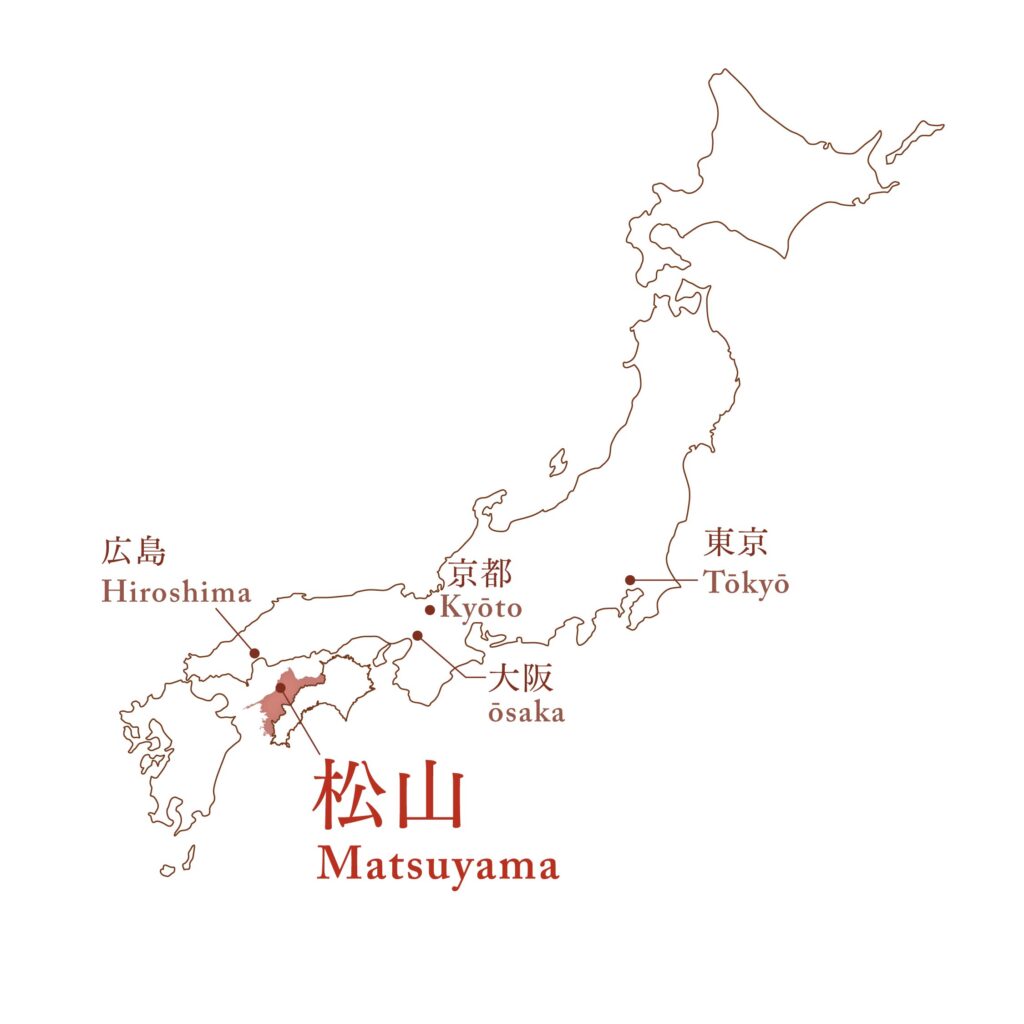
Various groups participate in the festival, dressed in attractive costumes inspired by baseball.
Performances are held on stages set up in Okaido, Chifune Town, Matsuyama Castle Park, and other venues, allowing the audience to enjoy each group’s uniquely arranged music and choreography.”
<Photos from 3 venues (Okaido, Chifune Town, Matsuyama Castle Park)>
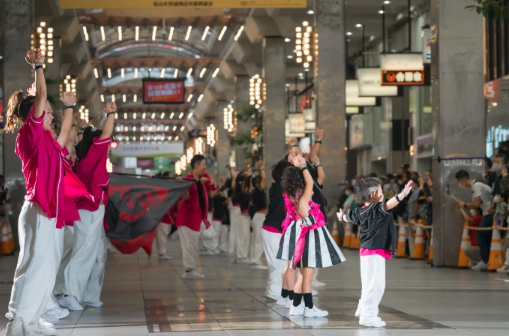
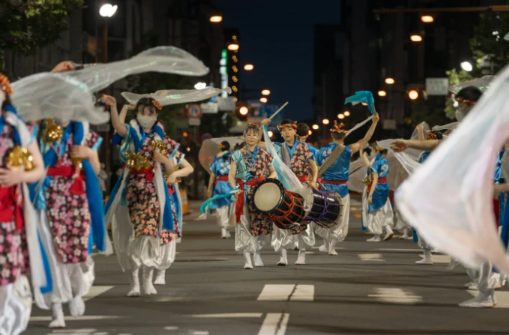
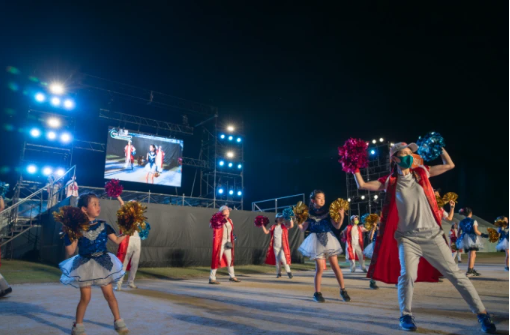
<YouTube video of the festival>
<Lyrics and musical score of Yakyuken Odori>
When you play baseball, why don’t you try it this way
After you throw, hit this way, and after you hit, catch this way
When you become a runner, ‘Essassa’ (a shout)
‘Out, safe, Yoyoino Yoi’ (a shout)
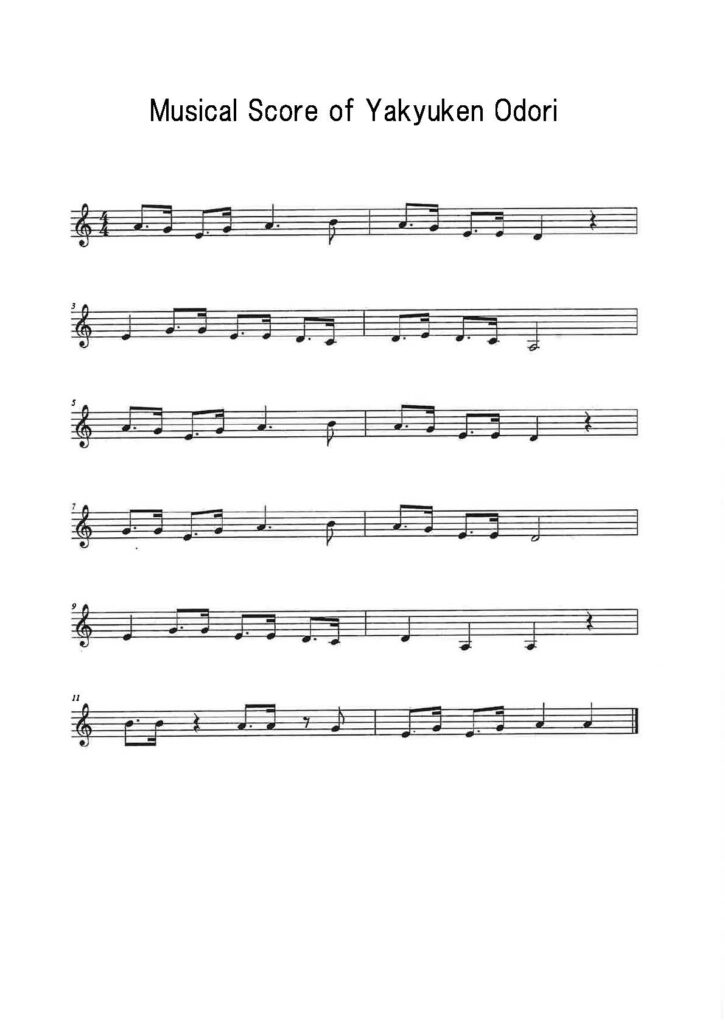
The History of Matsuyama Yakyuken Odori

A Celebrated Dance for Matsuyama, Ehime
The annual Matsuyama summer festival, currently known as Matsuyama Yakyuken Odori, originated in 1966.
Over the years, the festival’s official title has undergone three changes.
Initially, the event was called “Matsuyama Odori” until the sixth festival in 1971, and later renamed “Matsuyama Matsuri” from the seventh edition up to the fifty-sixth in 2021. Since 2022, it has been officially known as Matsuyama Yakyuken Odori.
Shikoku Island comprises four prefectures: Tokushima, Kochi, Kagawa, and Ehime. In the 1960s, notable dance traditions such as Awa Odori in Tokushima and Yosakoi Naruko Dance in Kochi gained nationwide acclaim. Takamatsu City in Kagawa also launched its own Takamatsu Odori in 1964.
As Ehime had no locally established dance, Matsuyama City wanted to create a unique local performance. This idea was intended to offer the public a “dance tour” that enhanced the diverse cultural heritage of Shikoku.
Participation from Nearby Municipalities
In the 1960s, Noh—a traditional Japanese performing art that combines dance, drama, and music—was widely accepted and popular in Matsuyama.
As a result, local organizers introduced a new dance performance titled “Iyono Matsuyama Tsuzumi Odori.” This performance is based on Noh, featuring the tsuzumi, a traditional Japanese drum commonly used in both Noh and Kabuki performances. The accompanying music incorporates a lively mambo rhythm. In addition, a decision was made to consolidate the various Bon dance traditions across the city into a single, unified citywide summer festival.
The first summer event, Matsuyama Odori, was held on August 13 and 14, 1966. During this inaugural event, 45 teams comprising approximately 3,000 dancers from Matsuyama City, Hojo City, and neighboring towns and villages performed along the central streets of Matsuyama Castle Town.
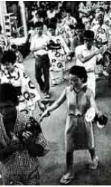
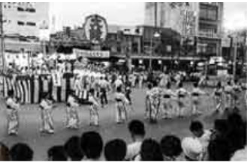
Debut of Yakyuken Odori: A Baseball Dance
Local organizers originally introduced the performance known as “Iyono Matsuyama Tsuzumi Odori” intending to achieve nationwide recognition. Although the dance enjoyed a respectable reputation, it did not gain widespread popularity.
After the fourth event, Tsuzumi Odori was discontinued and replaced by Yakyuken Odori as the main attraction starting with the fifth event in 1970. Based on the traditional parlor entertainment of Yakyuken, Yakyuken Odori was initially inspired by baseball and became very popular among the citizens of Matsuyama.
When local organizers were considering a replacement for Iyono Tsuzumi Odori, several regional dance forms were proposed. One of the options was Iyo Manzai, a traditional folk performing art from Ehime Prefecture centered around Matsuyama City, with a history spanning over 300 years to the Edo period.
Eventually, Yakyuken Odori was adopted because its entertaining nature was featured on television and subsequently gained nationwide fame.
Mr. Touichirou Fujima, Chairman of the Dance Division of the Ehime Traditional Japanese Music Federation, choreographed dance movements to accompany the Yakyuken melody, making them suitable for street performances. Thanks to this arrangement, Yakyuken Odori transitioned significantly from an indoor parlor entertainment to an outdoor street dance.
History of Yakyuken
Yakyuken has a long history. In October 1924, the Yashima baseball stadium in Takamatsu City in Kagawa Prefecture was completed, and a regional industrial baseball tournament was held to commemorate the occasion.
The team of Iyo Dentetsu, the present Iyo Railway Co., Ltd., based in Matsuyama, participated in the tournament. They were celebrated champions in Western Japan in those days.
The opposing team was a combined club team from Takamatsu Commercial High School and Takamatsu High School, along with its Junior High School. Their manager was Mr. Shigeru Mizuhara, a former manager of the Giants. The result was a decisive 8–0 defeat for Iyo Dentetsu.
In the evening, a social gathering was held at an inn in Takamatsu City. The banquet turned into a competition of hidden talents. The entertainment segment performed by the Takamatsu team members was far superior to that of the Iyo Dentetsu team members, which left the latter feeling even more discouraged.
Seeing the situation, Mr. Goken Maeda, the assistant manager of Iyo Dentetsu, created Yakyuken Odori on the spot to encourage his teammates. Mr. Goken improvised both the song and the choreography. He showed them how to dance in a separate room. Then they danced while Mr. Goken sang, accompanied by the shamisen – a traditional three-stringed Japanese lute.
―Lyrics of Yakyuken―
When you play baseball, why don’t you try to do it this way
After you throw, hit this way, and after you hit, catch this way
When you become a runner, ‘Essassa’ (a shout)
‘Out, safe, Yoyoino Yoi’ (a shout)
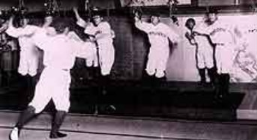
All uniformed members of Iyo Dentetsu danced before everyone, and the performance was a big hit. As soon as they began dancing, the atmosphere turned lively. Although they had lost the daytime game, they celebrated their triumph that night.
Since that incident, this dance has gained widespread popularity in Matsuyama and has become a staple of banquet entertainment.